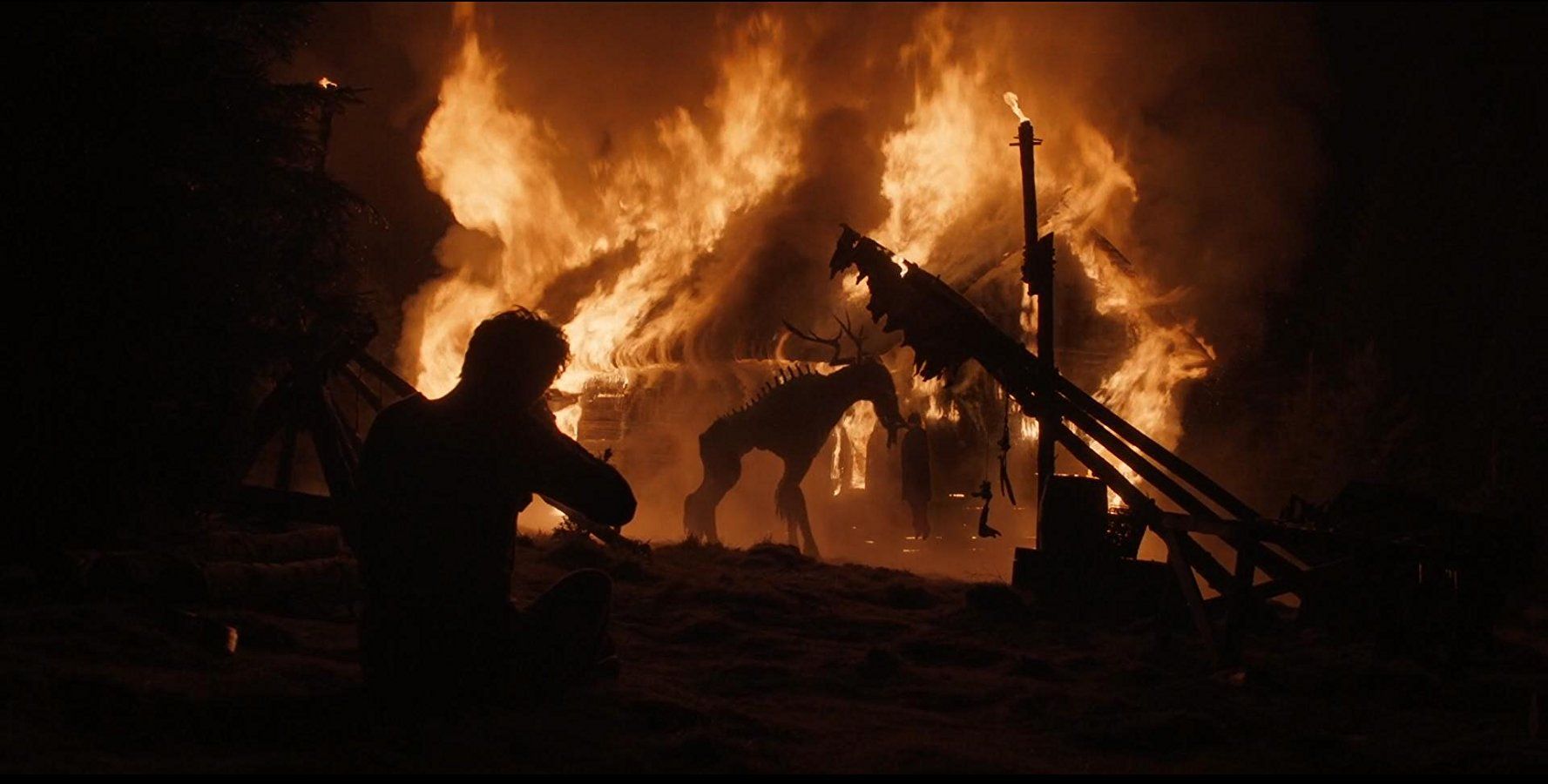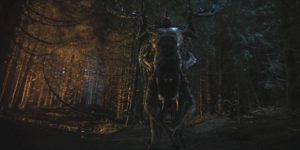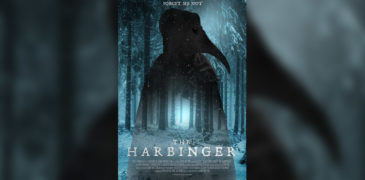
Until c.1080 CE, the Temple of Uppsala stood tall and proud outside Gamla Uppsala, Sweden. The temple served as a place of worship and community dedicated to pagan deities such as Thor, Odin, and Freyr. By the eleventh century, however, religious civil war had pitted Christians against pagans with Christianity emerging as the victor. Christian king, Inge the Elder, in an effort to expunge “wizards and witches,” of the old faith, leveled the hollowed structure and pagans were forced to retreat underground. Over time, it was thought that traditional paganism was eradicated and replaced with Christianity.
Pockets of pagan ritualism, however, survived in Europe despite the cementing of Christendom. Early medieval faith, for example, was an amalgamation of Christian practices with folk traditions. In what is now the British Isles, many commoners believed in both pixies and sprites while still observing Christian sacraments. Even during the early modern period, pagan rituals were occasionally practiced. In 1796, a small community in Germany sacrificed a live bull to promote health and limit the spread of disease (McKay and Wiesner-Hanks 2017, 601). In 1790, the clergy in Leicestershire, England, attempted to thwart the pagan custom of the “Hare Pie Scramble,” a spring time festivity linked with Easter. Paganism, additionally, would see a revival during nineteenth century Romanticism. Wagner’s “Ride of the Valkyries” and Goya’s “Saturn Devouring His Son” are fitting examples. Considering the pagan influence within European Christendom, an important question comes to mind: After King Inge the Elder destroyed the Temple of Uppsala, did an isolated pagan community survive?
The 2017 horror, The Ritual, entertains this scenario to terrifying effect. What begins as an anodyne backpacking trip in rural Sweden, later escalates into a nightmare similar to events in The Blair Witch. After a comrade injures his leg, the hikers attempt to shorten their commute off trail. A violent thunderstorm then erupts while trekking through a dense Swedish forest. As a result, the crew run adrift and are forced to seek refuge within an abandoned cabin. As the night progresses, they begin to hallucinate, hear cryptic sounds, and are terrorized with images of the occult. After being hunted one-by-one, the remaining two stumble upon what appears to be a bucolic community of pagans who worship the offspring of the god Loki. Their deity, however, requires ritualistic sacrifices and the villagers obediently participate in this required, but hallowed tradition.

The Ritual is a solid horror film because it successfully amplifies historical demonization of pre-Christian paganism. Following the crucifixion of Jesus, Christians had to compete with indigenous faiths for new converts and survival. Christianity is an evangelical faith and Gospel propagation is a requirement. The best way to accomplish these goals was to dispel pagan theology and persuade future adherents that Jesus was the true Messiah.
The Christian weapon of choice was to invoke Satan and his demonic army to explain the growth and success of other faiths. By demonizing pre-Christian theology, Christians could demonstrate that pagan followers have been deceived by demonic forces. The only way to combat these diabolical influences, is for one to take baptism and believe in the miracle of Jesus Christ.
New Testament scholar Elaine Pagels, for example, asserts that for “two thousand years, they [Christians] have identified their opponents, whether Jews, pagan, or heretics, with forces of evil (Pagels 1995, xxiii).” Pagels claims that early Gentile followers of Christ would demonize, first the Jewish community they were separating themselves from, then paganism throughout the Roman Empire. Finally, as Christianity gained hegemony throughout Europe, dissidents would be labeled and disciplined as heretics, and therefore in league with evil forces.
Early Christian apologist Justin is a suitable example. Raised in the Asian Minor as a pagan, Justin would later convert to Christianity after witnessing a barbaric gladiator fight in Rome. He is one of the first Gentile converts to associate pagan gods with demons: “We [Christians] pity those who believe such things, for which we know that the daimones are responsible (Justin Martyr, First Apology 25).”
Christians, in large part, were attempting to make sense of the world they inherited. Early Christianity was deemed a threat to the Roman Empire and was therefore persecuted. They needed to make sense of the seemingly unrelenting abuse. How could they be the chosen people and experience such horrific torture?

Religious historian, Bart Ehrman claims, “Public torture and gory executions of those faithful to God would surely be avenged (Ehrman, 2020, p. 255).” Meaning, those who partake in Christian torture, were not simply oppressors, but also damned and allied with evil forces. Those who endure such torment, however, would be rewarded in the afterlife. This was a motivating facture for Christians to keep the faith and to continue linking paganism to the demonic.
After the conversion of Constantine and the Council of Nicaea, Christianity slowly evolved to become the dominant faith within the Roman world. Now more organized and hierarchical, church leaders became the persecutors and systematically purged the Roman world from “evil” paganism.
In 392CE, for example, Christians toppled the Alexandrian temple of Serapis, thereby destroying centuries old literary works from the library of which they were held. According to classicist Catherine Nixey, St. John Chrysostom urged his congregation to spy on one another, break into members’ homes and interfere into their private matters. The congregation, thusly, were required to report all apostates and heretics to St. John Chrysostom, so he could punish them accordingly (Nixey, 2018, p. xxx). St Marin, furthermore, is rumored to have bragged about demolishing pagan temples all throughout Gaul (Nixey, 2018, p. xxxiii). In book II of the City of God Against the Pagans, furthermore, St. Augustine claims pagan Romans became weak due to spiritual corruption, and it was actually Christianity (in Book IV) that held Rome together.
After the collapse of Rome, smaller European empires would continue to demonize and purge indigenous religions. Charlemagne engaged in a ruthless campaign in Verden (modern-day Lower Saxony) where he slaughtered 4,500 pagan Saxons and forced the survivors to convert to Christianity or be put to death. In May 877CE, King Alfred led his troops into battle against pagan Vikings at the battle of Eddington. Alfred’s Saxons pursued the Viking army to Chippenham where the pagans surrendered. Per the Treaty of Wedmore, the Vikings were forced to take baptism in the Christian faith. Kings Olaf Tryggvason and Olaf Haraldson, likewise, violently forced Christianity on Norwegians, using murder and arson against pagans that resisted.
The demon-like entity in The Ritual is purported to be the offspring of Viking god, Loki. An interesting deity in the pantheon of Norse mythology, Loki is regarded as a trickster, a shapeshifter, and a deceiver. Lacking the brute strength of gods like Odin and Thor, Loki compensates with superior intellect. Sometimes he helps his fellow deities, other times he is mischievous.

Loki reminds one of the Satan in the Christian Old Testament. Hebrew for the Adversary, The Satan appears to be an angel in concert with God. After all, the story of Job if a fitting example. When read carefully, it is clear that God gives permission for Satan to terrorize Job in an effort to test his devotion. Overtime, however, Satan evolves to become the enemy of God and humankind, as evident in the New Testament.
This is similar to what happens to Loki in Norse mythology. Initially, in league with the gods, overtime Loki comes to represent betrayal and evil. He lets jealousy manifest into the murder of fellow god, Balder. The consequence of which, leads to punishment via torture. After the assassination of Balder, Thor tracks Loki to a rural cave. Thor proceeds to tie him up in the cave using the entrails of one of Loki’s sons. Then a venomous snake is fixed above his head, slowly dripping poison on Loki’s face. According to mythology, this punishment continues until the end of days (or what the Vikings called Ragnorak).
Some of Loki’s offspring, additionally, have close parallels to Judeo-Christian tradition. Loki will produce a daughter with the giant, Angerboda. This hideous creature will be called Hel and become goddess of the underworld. The couple will also produce the evil serpent Jörmungand who will do battle with Thor during Ragnorak.
It becomes easy to demonize Loki and his offspring through the lens of Christendom. His daughter is Hell itself and his son is an evil serpent, reminiscent of the serpent who tricked Eve in Genesis. The demonic-like progeny of Loki in The Ritual is called a Jötunn, but the revering villagers dare not speak its name for fear of retribution. The Jötunn monster is a thematic continuance of Loki’s posterity. It is a hoofed animal with antlers but also possesses human arms and hands. It is almost a Scandinavian interpretation of a Greek satyr mixed with a large animal from the moose family. The Ritual is both clever and scary because it leans on the traditional Christion meme of demonizing paganism. The Ritual, additionally, uses the offspring of one of the most controversial deities in Nordic mythology, further heightening the viewers anxiety.
The final human sacrifice in The Ritual helps illustrate the demonic-like qualities of the Jötunn. While tied to a post, Dom has a vision of his wife approaching from the dark forest. As she nears her husband, the Jötunn remerges and impales Dom on a tree. Like the historical Christian Devil, the Jötunn has the power to shape-shift and cognitively manipulate its victim. The human sacrifices seem to fuel the Jötunn, similar to Satan’s lust for human souls.

The powers of the Jötunn are confined to the dark, undeveloped forest. Once the main character, Luke, escapes to an open meadow, the Jötunn can no longer pursue his prey. The forest in the final scene symbolizes the grim and mysterious. It is where creatures and monsters can harbor undisturbed, away from human interference.
Luke’s elated celebration after battle with the Jötunn, however, is a significant moment within The Ritual. Luke’s reaction represents “man’s” triumph over the shadowy unknown. The open meadow is bright and sanguine, symbolizing some sort of Manifest Destiny. The final scene demonstrates the possible victory of good over “demonic” paganism, especially if one is determined and dedicated to the noble cause.
A great many horror films successfully utilize images of the forest and the uninhabited wilderness to augment suspense. Demons within The Evil Dead (1981) emerge from the dark woods to terrorize the innocent. The Witch (2016) plays on Puritan fear during early American colonialism, whereby The Devil saturates areas within the undeveloped and “heathen new world” to prey on good European Christians. Pyewacket (2017) transforms a serene and unspoiled rural residence, into a disturbing scene of demonic activity, murder, and the occult.
Germanic folklore and mythology is flooded with stories about forests. Even the Roman historian Tacitus, acknowledges the link between pagan Germanic tribes and the pristine forest. The forest evolves, however, to represent a place of the unknown. Apparently celebrated within European paganism, overtime witches, devils, and ominous spirits lurk inside this realm and humans must tread carefully. It may be more prudent to loiter in spaces of light and human development, rather than a cryptic forest.
All these characteristics make The Ritual a solid horror film. It successfully highlights many nuanced historical issues and uses them to create a truly disturbing movie experience. After viewing this film, one will certainly think twice about wondering off-trail when trekking through a cryptic forest.
Works Cited
Ehrman, Bart D. 2020. Heaven and Hell: A History of the Afterlife. New York: Simon & Schuster.
McKay, Crowston, Perry, and Wiesner-Hanks. 2017. A History of Western Society, 12th Edition, Vol I. Boston, MA: Bedford/St. Martin’s Macmillian Learning.
Nixey, Catherine. 2018. The Darkening Age: The Christian Destruction of the Classical World. Boston: Houghton Mifflin Harcourt.
Pagels, Elaine. 1995. The Origins of Satan. New York: Random House.
More Film Reviews
Not since 2006’s Stay Alive has video gaming been in the spotlight of horror in the way it is in 2023’s Livescreamers. Directed by Michelle Iannantuono, this sequel to the… The Harbinger, Andy Mitton’s follow-up to his delightfully creepy Witch in the Window, is, simply put, the most terrifying COVID-era horror film. Dealing with many of Mitton’s signature themes –… In 1989 Barry Gillis released, arguably, the worse film ever made with his sci-fi horror experiment Things (1989). The mix of incoherent story, disorienting and cheap camera work along with… One of my current hobbies is searching thrift stores for weird, interesting, or hard-to-find DVDs. With streaming networks dominating the distribution channels, and more and more media disappearing from these… “There is always some madness in love. But there is also always some reason in madness.” -Friedrich Nietzche Last year, cinema fans worldwide were able to engage and appreciate the… A post-apocalyptic, 80’s nostalgia, comedy creature feature for the Stranger Things era! **Minor spoilers follow** If TV series such as Stranger Things and that one episode of Black Mirror has given…Livescreamers (2023) Film Review – Scream Your Heart Out [Unnamed Footage Festival 7]
The Harbinger (2022) Film Review – Don’t Say His Name
Wicked World (1991) Film Review – Toronto is Swarming with Nihilists
Shark Skin Man and Peach Hip Girl (1998) Film Review: Must-see Japanese Shoot ‘Em Up
Tezuka’s Barbara (2019) Movie Review – A Nuanced Portrait of Decadence and Obsession
Revealer (2022) – A Shudder Original Review

![Livescreamers (2023) Film Review – Scream Your Heart Out [Unnamed Footage Festival 7]](https://www.grimoireofhorror.com/wp-content/uploads/2024/03/Livescreamers-2023-cover-Fixed-365x180.jpg)




